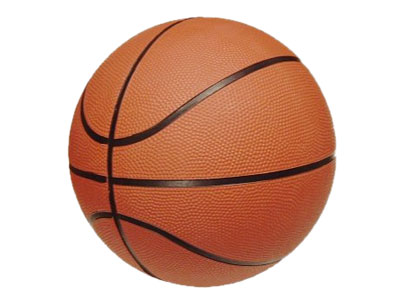Which materials bounce?
How does this align with my curriculum?
Balls go up and down. But what makes for a good ball? Find out by exploring which materials bounce.
What You Need
- Various round objects (apples, oranges, balls of yarn, rolled socks, etc.)
- Various types of balls that can bounce
Safety First!
Avoid choosing any small objects that could be choking hazards.
What To Do
- Look through all the objects and predict which ones will bounce
- Bounce each object and sort them into 2 piles – objects that bounce and objects that do not bounce.
Discovery
Balls bounce due to the elasticity of the material they are made from. The best materials for bouncing are the ones that can stretch like an elastic band and then go back to their original shape quickly and easily. Some materials, like rubber, are very elastic, and therefore bounce easily.
When a ball hits a hard surface, its shape will change. It tends to flatten or deform. This flattening happens for only a fraction of a second, and then the ball returns to its original shape. This flattening happens too quickly for our eyes to see.
When the ball flattens, it gains energy. When the ball returns to its original shape, this energy causes the ball to bounce up, the opposite direction to the original falling motion. As the ball bounces, it loses energy and will gradually slow down and finally stop.
Elasticity is a very important property of many materials, objects, and things we use every day. For example, some clothes may have an elastic waist band fitted into them so they fit better. As well, the muscles in our body have special elastic properties that allow us to perform activities and bend our bodies in different ways. Without elasticity, we may not be able to use or do things that we enjoy daily.
- Bounce your objects again and try to answer the following questions:
- Do some materials bounce longer than others?
- Which of your materials bounce the highest?
- What happens when you try bouncing the items on different surfaces?
- Can you find other objects in your house that have elastic properties (that can stretch like an elastic band and then go back to their original shape quickly and easily)? Think about why the elasticity helps that object.
To explore this topic further check out these Let's Talk Science resources:
- Bouncing Objects (Picture Collection) - 10 images of some spherical objects such as golf balls and tennis balls that are made of different materials and used for specific purposes
- Objects That Bounce (Lesson) - Students develop and apply comparing & contrasting, observing and predicting as they investigate the properties of familiar objects and materials.
What’s happening?
Balls bounce due to the elasticity of the material they are made from. The best materials for bouncing are the ones that can stretch like an elastic band and then go back to their original shape quickly and easily. Some materials, like rubber, are very elastic, and therefore bounce easily.
When a ball hits a hard surface, its shape will change. It tends to flatten or deform. This flattening happens for only a fraction of a second, and then the ball returns to its original shape. This flattening happens too quickly for our eyes to see.
When the ball flattens, it gains energy. When the ball returns to its original shape, this energy causes the ball to bounce up, the opposite direction to the original falling motion. As the ball bounces, it loses energy and will gradually slow down and finally stop.
Why does it matter?
Elasticity is a very important property of many materials, objects, and things we use every day. For example, some clothes may have an elastic waist band fitted into them so they fit better. As well, the muscles in our body have special elastic properties that allow us to perform activities and bend our bodies in different ways. Without elasticity, we may not be able to use or do things that we enjoy daily.
Investigate further
- Bounce your objects again and try to answer the following questions:
- Do some materials bounce longer than others?
- Which of your materials bounce the highest?
- What happens when you try bouncing the items on different surfaces?
- Can you find other objects in your house that have elastic properties (that can stretch like an elastic band and then go back to their original shape quickly and easily)? Think about why the elasticity helps that object.
To explore this topic further check out these Let's Talk Science resources:
- Bouncing Objects (Picture Collection) - 10 images of some spherical objects such as golf balls and tennis balls that are made of different materials and used for specific purposes
- Objects That Bounce (Lesson) - Students develop and apply comparing & contrasting, observing and predicting as they investigate the properties of familiar objects and materials.
